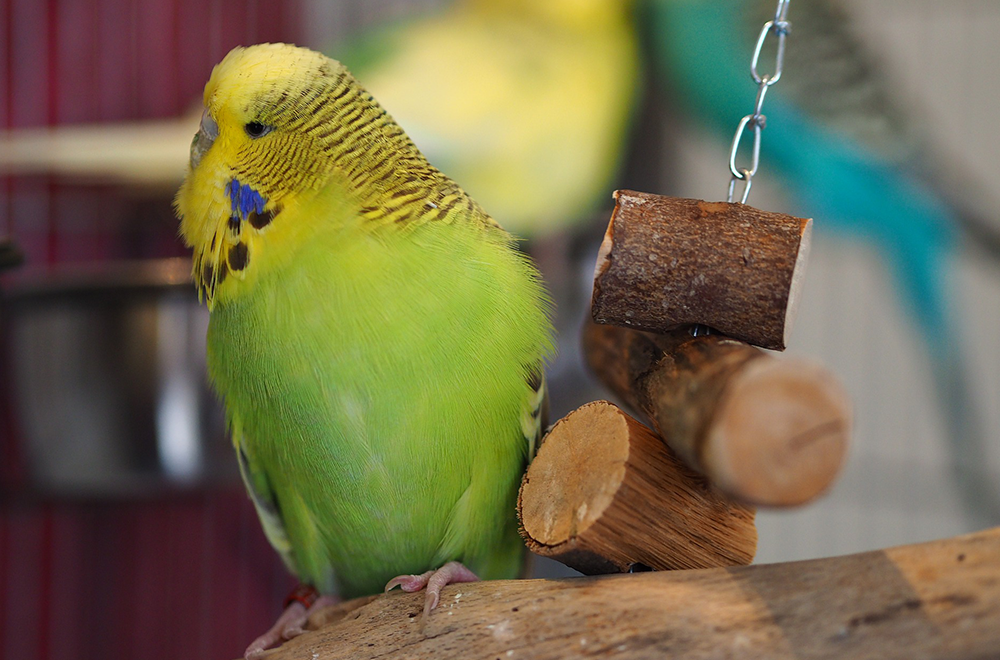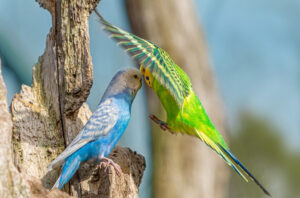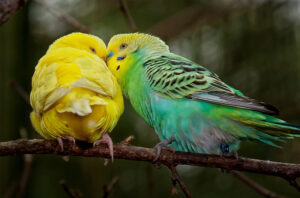If you wonder “How to take care of your budgie”, well, caring of a budgie (parakeet) is relatively easy; you should always provide your budgie with freshwater, optimum temperature and ensure that budgies always have toys around. Toys are an important factor to your budgie happiness.
Caring for an adult budgie one is much easier than a young one because a baby constantly need attention and someone to feed it. Here I have shared a list of some essential things for a budgie care guide.
Budgies are amazingly beautiful parakeets, naturally found in the different areas of Australia. There is much color variation present in different flocks or even in the same flock of the birds. They are mainly distributed in the grassland areas of Australia, however, they have to fly miles over miles to get their food daily. In this way, they can be found in many areas of Australia like in low lands, desserts etc.
Accommodation for budgies
Budgies are nomadic birds and they eat much food daily. They also have to utilize this food’s energy, so they need a wide home. Cage for a single bird should be at least of 14” H, 11” W, and 16” L. You can even choose a larger one, however, smaller than above-mentioned dimensions is not recommended as in small cages bird can’t express its natural behavior which may lead to depression and aggression. The space between two wires of the cage should not be more than half of an inch, as in wider spaces it may entangle its neck. More than one perches must be present in the cage so that the bird can move freely and feels like a natural environment.
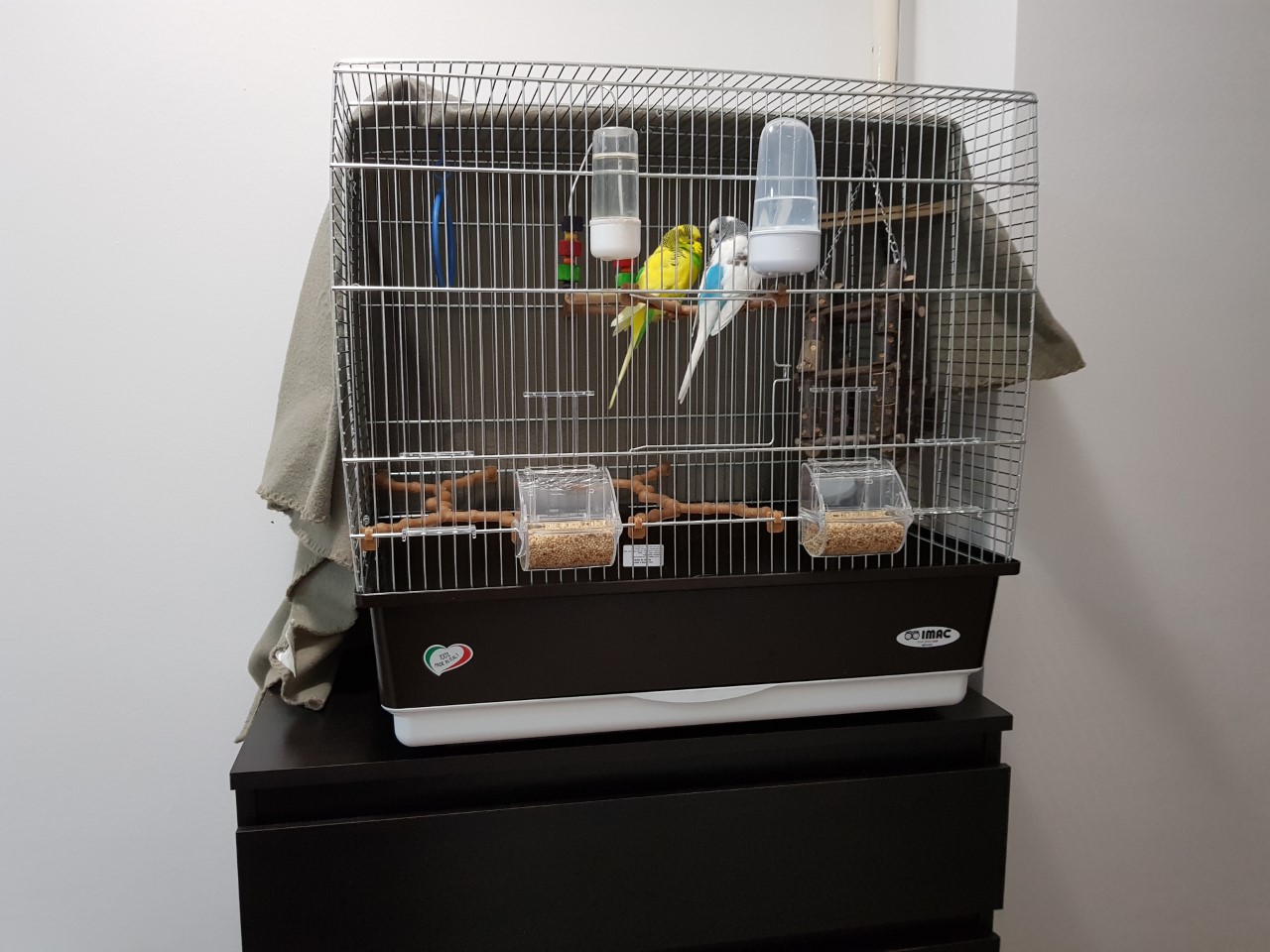
The basics of what you need:
- A wide cage (dimensions are mentioned below)
- A water container
- Food container
- Perches
- Thermostat (in extreme conditions)
- Light source (in indoor conditions)
Along with these necessities, you should also provide your budgie with freshwater and optimum temperature, so that it may enjoy some gentle natural environment.
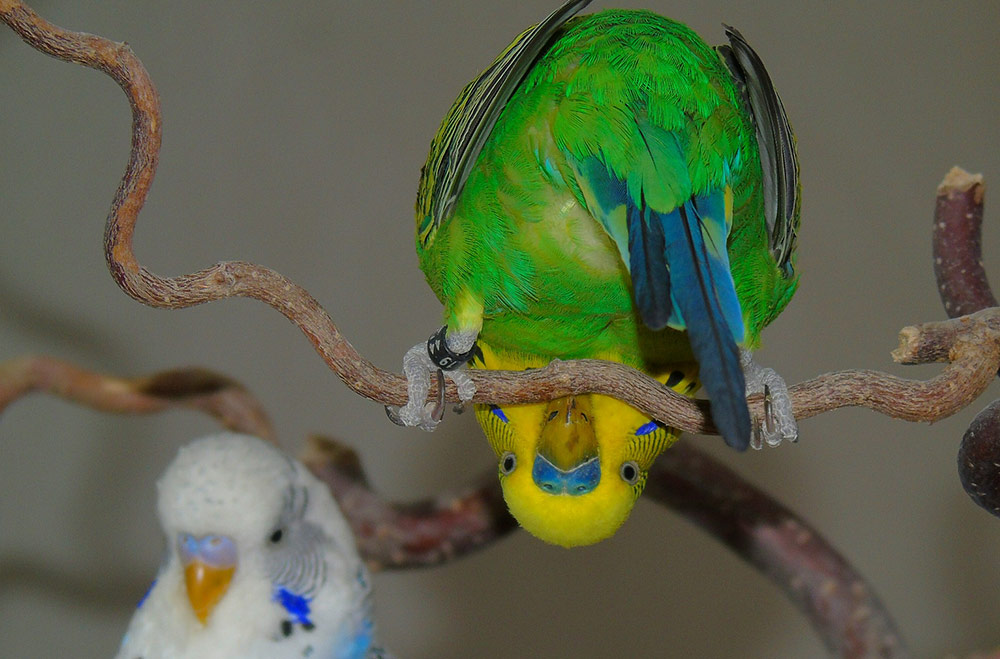
You should also keep some toys for your budgie, so that it may feel relaxed when you are busy in different works and have not much time for your little partner. Keeping a mirror in the cage may become irritating for you because budgie may be thought it to be another budgie and start playing with it, instead of you. However, if you’re a busy man and not have so much time for budgies you can then kept them in pairs, so that they can play with other partners and enjoy life moments.
A balanced diet is called a healthy diet not only for humans but also for animals and birds. You should expect a healthy diet for your budgie something related to its natural environment. As they are found in Australia and fed upon many types of grains, grasses, weeds, fruits, and degrading substances, so you should provide them with something related to such diet.
Healthy food for Budgies
You can provide a balanced diet to your budgie by providing with various kinds of grains like millets, oats, canary, etc. Along with these grains, you should also add some fresh components like vegetables and fruits. At least 50% of grains should be sprouted in the provided mixture, as dry grains contain many fat contents and they can increase the fat deposition in the body. Provide the mixture of these grains in forage form, so that they may eat up all the components. Don’t forget to provide with fresh vegetables daily. You can add fresh vegetables and fruits at the breakfast of your budgie.
Adding some supplements and minerals in the food is also necessary for the normal growth of your budgie. You can also add limestone or cuttlefish in this respect.
Hand-feeding to Baby Budgies
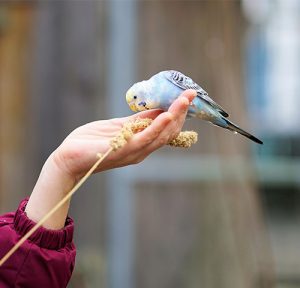
A lot of feed mixtures are available in the market for young ones, but you should choose a better one for your budgie. You can consult to your veterinarian or to a breeder for the best food for your budgie according to the breed and environmental conditions. Fresh preparation of the feed mixture is also very important. Maintaining the normal temperature of the feed mixture is also very important for proper digestion. A prepared should not be warmer than 40 °C to 45 °C, because a warmer food can burn fragile crop of your budgie. You can use different types of equipment to feed your baby budgie. You can use a spoon or nozzle for your budgie.
A crop needle can also be used but only expert can use it because it is directly linked with the crop of the bird (A crop needle is use in first three weeks of the birth to feed a baby budgie). However, in the first two weeks, you can use a bend backside of a plastic spoon.
Budgies grow rapidly in the first few weeks.
Budgies also require different amount of food at different stages of their life. In the first two weeks, they require 2-4 ml of the food which should be double in the third week of their age. In the fifth week, budgie baby should be supplied with at least 8 ml of the mixture at a time. As avian ‘s digestive system is very rapid, a baby budgie can digest its food within two to four hours depending on the contents of the food and also the environmental conditions. So, you should feed them at least 6 times a day.
Healthy food mixture for your Healthy Budgie
Adding some supplements and minerals in the food is also necessary for the normal growth of your budgie. You can also add limestone or cuttlefish in this respect. Here is list of mixture of grains that you can make expect a healthy food for budgie.
- Millet – 50%
- Canary – 40%
- Oats – 10%
Mix all of the above contents and make a foraging with 50% rice husk, so that they may make some effort to get healthy food.
How much sleep do budgies need. Take care of your budgie sleep hours.
On average, an adult healthy budgie needs at least 10 to 12 hours of consistent sleep in a day. They may also have naps at different times in a day when they feel tired. In a natural environment, they sleep as the sunsets and awakes with sunrise, in this way, maintain a natural sleep cycle. This circadian rhythm of budgies remains maintained in large aviaries where there is no artificial light present to hinder in the natural body cycle.
However, in case of your home, you should maintain this balance too, so that budgie may remain happy. You can use a blanket at night time to cover the cage of the budgie. Also, maintain quietness around the cage so that they may sleep smoothly inside the cage. Perches in the cage are also necessary for sound sleep.
Comfort Zone for Budgies
“Health is wealth” this saying is not only for you but also for the animals, because an organism can only enjoy its life when it is fully healthy.
Health can only be maintained with optimum conditions. The ideal temperature for a budgie is in between 65 °F to 85 °F. You can use an AC in summer to maintain the temperature in this range, however, they feel best in the line of 60 in summers. Using an electric heater or incandescent bulb may help to maintain this temperature within the range. Maintaining this temperature is very important at night time.
Along with the maintenance of the ideal temperature, the optimum humidity is also very important. A humidity of about 60% to 70% is beneficial for cheering a good temper of your budgie. A light of 12 to 14 hours is essential in captivity.
Along with these conditions, hygiene and the noise-free environment is also very important for budgies that affect positively on their body metabolism.
Keep your parakeets safe. Take care of your budgie safety.
Safety measure is one of the important components for your budgies. You should maintain balance in the cage so that no hazardous condition occurs. Maintain the water level and food pollutant-free and also keep the floor of your budgie’s cage clean, so that or-fecal diseases can be prevented. Keep the perches apart from the food containers so that dropping may not contaminate the food material.
Double-check the surrounding of your budgie when it comes out from its cage so that it may not swallow many toxic or synthetic substance which may lead to the development of a different type of diseases in the body.

